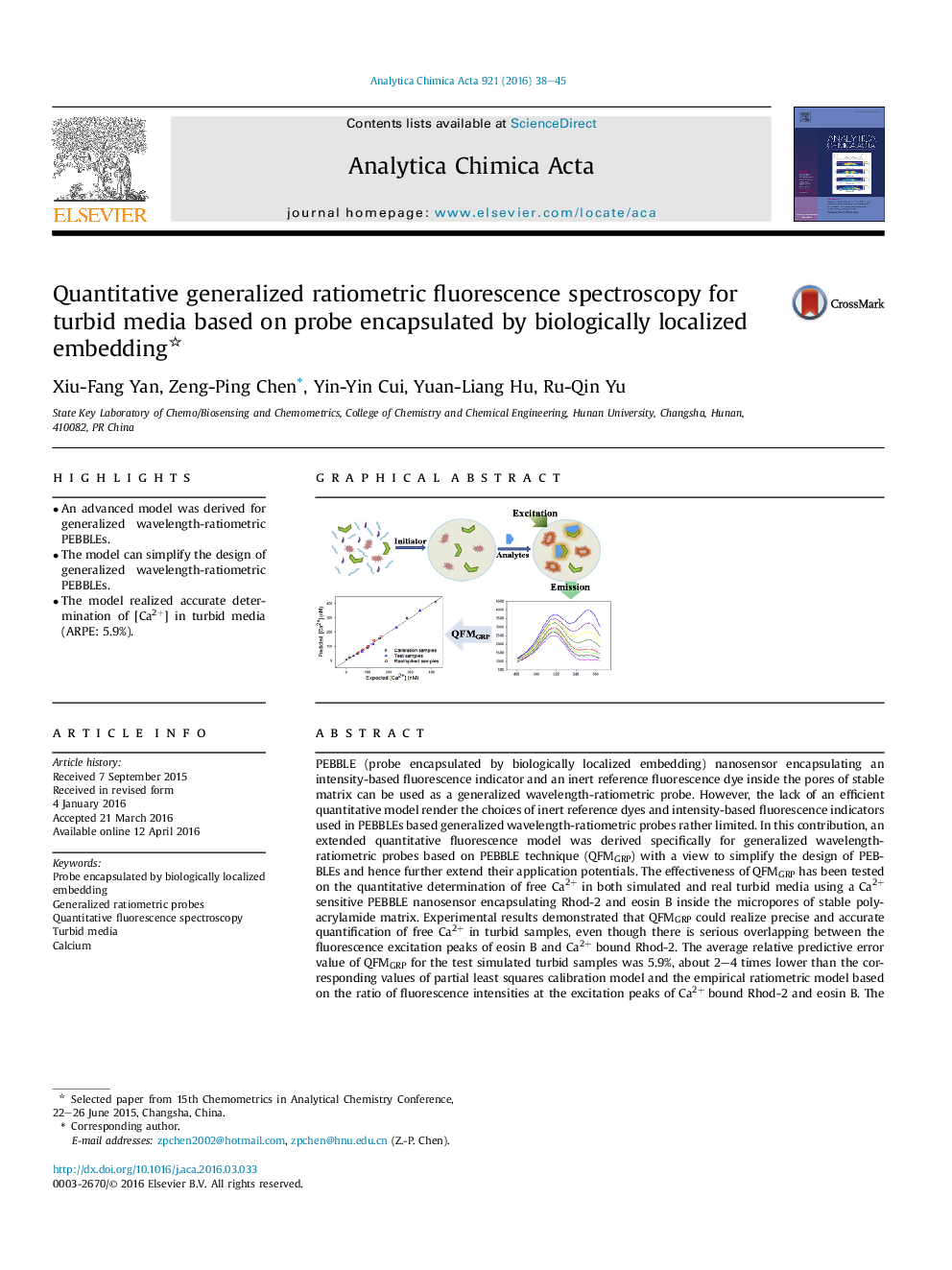| Article ID | Journal | Published Year | Pages | File Type |
|---|---|---|---|---|
| 1162900 | Analytica Chimica Acta | 2016 | 8 Pages |
•An advanced model was derived for generalized wavelength-ratiometric PEBBLEs.•The model can simplify the design of generalized wavelength-ratiometric PEBBLEs.•The model realized accurate determination of [Ca2+] in turbid media (ARPE: 5.9%).
PEBBLE (probe encapsulated by biologically localized embedding) nanosensor encapsulating an intensity-based fluorescence indicator and an inert reference fluorescence dye inside the pores of stable matrix can be used as a generalized wavelength-ratiometric probe. However, the lack of an efficient quantitative model render the choices of inert reference dyes and intensity-based fluorescence indicators used in PEBBLEs based generalized wavelength-ratiometric probes rather limited. In this contribution, an extended quantitative fluorescence model was derived specifically for generalized wavelength-ratiometric probes based on PEBBLE technique (QFMGRP) with a view to simplify the design of PEBBLEs and hence further extend their application potentials. The effectiveness of QFMGRP has been tested on the quantitative determination of free Ca2+ in both simulated and real turbid media using a Ca2+ sensitive PEBBLE nanosensor encapsulating Rhod-2 and eosin B inside the micropores of stable polyacrylamide matrix. Experimental results demonstrated that QFMGRP could realize precise and accurate quantification of free Ca2+ in turbid samples, even though there is serious overlapping between the fluorescence excitation peaks of eosin B and Ca2+ bound Rhod-2. The average relative predictive error value of QFMGRP for the test simulated turbid samples was 5.9%, about 2–4 times lower than the corresponding values of partial least squares calibration model and the empirical ratiometric model based on the ratio of fluorescence intensities at the excitation peaks of Ca2+ bound Rhod-2 and eosin B. The recovery rates of QFMGRP for the real and spiked turbid samples varied from 93.1% to 101%, comparable to the corresponding results of atomic absorption spectrometry.
Graphical abstractFigure optionsDownload full-size imageDownload as PowerPoint slide
